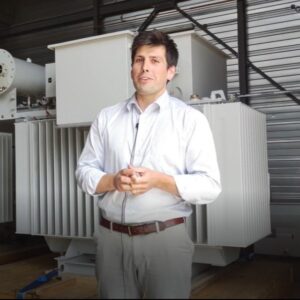The Device Chronicle interviewed Jean Perrot, Director of Operations, Celduc Relais about the reed switch technology and IoT beacons in rail.
Jean Perrot is an engineer by training who then transitioned into management. He joined the company seven years ago, and has had roles in sales, marketing and sales organization and most recently operations over that time. Jean began working for Celduc Relais in China where he opened the Operations Office for them but has moved back to France in the last year. He is an expert on the read switch technology used in train door sensing.

IoT sensors and the reed switch
As a former director of strategy, he has also been involved in technical evolution of the roadmap for Celduc Relais products including the reed switch technology. Specifically, in charge of developing new IoT sensors. Celduc Relais is a leader in IoT sensors, relays and switches, and over a third of its business is devoted to this product line and market. Jean remarks that “most of the products that Celduc Relais sells are relays and the sensors and Celduc Relais has been particularly successful with a specific type of sensors called the Read ones. This is the name of the component inside and there are very few Reed switch manufacturers in Europe and we are one of them. Celduc Relais started to make switches 40 years ago, so the company was at the very beginning of this technology and its core focus is still the components inside the magnetic sensors. Jean says “if you consider the sensor market, it is a huge market with many different types of sensors, so many different types of applications. We will only consider the magnetic sensors market which is 5 to 10% of the total global market for sensors and then Read sensors are 50% of the magnetics sensors market.” Jean further explains that the reed switches have several advantages but mostly the main advantages are the lifetime, the reliability, and the accuracy of the switching.
Switching facilitates the detection, the closing and the opening of the door on a train. The sensor used must be very reliable and robust to do this over the lifetime of the door. This direction allows for optimal managed maintenance of the doors. Jean explains that several switches will be inside the sensors so there is one main scheme and then redundancy. This increases safety inside. The sensors detect when the door is open, and when the door is closed, but you also want that the sensor detects when the door is not almost closed, and not entirely closed. If you have a piece of food inside the door and then the door will not close entirely. Then the sensor has to detect the door is not entirely closed. So this is about the accuracy of the sensing and the Celduc switching technology increases the accuracy of the detection.
The Reed switch
Switching with the reed switches is done with the magnets and the switches. So this magnet is the actuator and it is completely separate, but then switches. So the magnet will activate the sensors and the sensors will communicate. These rich switches bring more accuracy and lifetime as they are designed inside glass tubes. This glass tube is hermetically sealed and inside it’s a combination of different types of gas to limit the corrosion of the blades. This process enables the switch to go through a certain number of cycles. This communication cycle could be between 1 million and 2 million times with the rich switches technology. Another very interesting advantage of the read switches is the low energy consumption. They have passive components so when the switch is open, there is no energy consumption and because the blades themselves inside the glass tube are very small, a very small electric resistance allows for very small power consumption so, The parameters and technical features of the read switches is very interesting for IoT applications: as the idea of the IoT is to have one remote and connected object. Or when it’s a bit more complicated to everything connected to the network that we will have that. And this is where Celduc Relais decided to enter the IoT markets: “Combining the company’s low energy consumption sensors with narrowband IoT through the SigFox Network. This provides affordable communication. With the combination of this, the narrow network communication and our sensors, we can offer an IoT solution that lasts for 10 to 15 years without any battery change maintenance.
Software for IoT switches
Celduc Relais has developed its own management software for the IoT switches. Jean says “The biggest part of the value added is not the software complexity as the status must only indicate whether the door is open or closed at various degrees. They don’t need to monitor and it’s one way communication. Celduc Relais uses its own software platform and opens its own platform to our customers. The maintenance is carried out by Celduc Relais. Nothing needs to be updated.
IoT sensors in tunnel monitoring for SNCF
In conclusion, Jean mentions one other IoT application that the Celduc Relais team has worked on for a railway client: an ID solution is a water detector inside a railway tunnel. The project was completed for French national rail operator SNCF and monitored water flow in the tunnel infrastructure. IoT sensing is key here, you need a low powered device as it’s a very remote environment with always the risk of power loss, and the connectivity is also poor. You don’t want to send engineers and support technicians into the tunnel of the train every day for routine monitoring.
We wish Jean and his colleagues well as they continue to use IoT to perform sensitive and accurate detection in rail and adjacent infrastructures.
